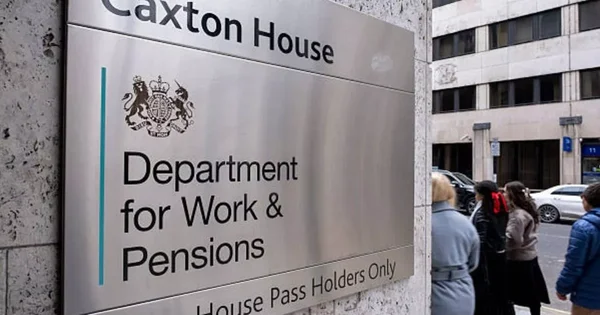Let’s Get You Set Up the Right Way…
Starting a business as a sole trader in the UK is exciting, but figuring out tax can feel like an extra hurdle. When do you register with HMRC? What counts as income? What happens if you miss a deadline?
Don’t stress. In this guide, we’ll walk through exactly when and how to register for Self Assessment, what the rules are, and how to avoid penalties. You’ll also learn why getting this step right from day one can save you a lot of hassle (and money) later on.
Whether you're launching a side hustle or going all in, Pie tax makes staying on top of your taxes simpler with real-time tracking and built-in support. Or if you're just here to get your head around the process, we’ve got you covered, let’s break it down.
What is Self Assessment and why do sole traders need it?
Self Assessment is HMRC’s system for collecting income tax from people who earn money outside of regular employment.
A self employed person is anyone who runs their own business, and sole traders are a common type of self employed person. As a sole trader, you’re running your own business, which means HMRC won’t automatically collect tax from your earnings.
As a sole trader, you and your business are considered the same legal entity, meaning you are personally responsible for all business debts, this is known as unlimited liability.
In contrast, limited companies are separate legal entities and offer limited liability protection to their owners, so personal assets are generally protected if the business faces financial difficulties.
Instead, you’ll need to report your income and expenses annually through a Self Assessment tax return. This is how HMRC works out how much tax you need to pay.
Registration gives you a Unique Taxpayer Reference (UTR) number that you’ll use for all your tax affairs. This becomes your tax identity for your business activities.
Do sole traders always need to register for Self Assessment?
Yes, almost all sole traders need to register for Self Assessment. The specific rule is that you must register if you earn more than £1,000 from self-employment in a tax year.
This £1,000 is known as the “Trading Allowance” and provides a small buffer for very occasional earnings. However, if you’re starting a proper business, you’ll almost certainly exceed this amount. Once you exceed the trading allowance, you must notify HMRC or inform HMRC by registering as a sole trader.
Even if you have another job where you pay tax through PAYE, you still need to register for Self Assessment for your self-employed work. There’s no exemption for part-time businesses. Registering as a sole trader is a straightforward process and is required to ensure you meet your tax obligations.
When I started my freelance writing business alongside my day job, I wrongly assumed I didn’t need to register until I earned a substantial amount. This misunderstanding nearly cost me penalties.

When to register for Self Assessment
The deadline to register is 5 October after the end of the tax year in which you started trading. For example, if you start your business in June 2025, you must register by 5 October 2025.
When registering for Self Assessment, you will need to provide your business start date, which is the date your business officially begins operation.
The UK tax year runs from 6 April to 5 April the following year. This timing is important to remember when calculating your registration deadline.
It’s advisable to register as soon as you start trading rather than waiting for the deadline. Early registration gives you more time to prepare for your first tax return.
How to register for Self Assessment as a new sole trader
Registering for Self Assessment is straightforward and can be done online through the GOV.UK website. You’ll need your National Insurance number and basic personal details. To complete your registration and manage your tax affairs, you will need to create an online account with HMRC.
The online process typically takes about 10-15 minutes to complete. Once submitted, HMRC will send your UTR number in the post, usually within 10 working days. You will also receive an activation code, which is required to access your online account.
If you prefer not to register online, you can call HMRC’s Self Assessment helpline or complete form CWF1 and post it. These alternative methods may take longer to process.
During registration, you’ll need to provide information about your business, including when you started trading and the nature of your business. Be as accurate as possible with these details. It is important to start keeping records from the beginning to ensure accurate accounting and tax compliance.
You become a sole trader by registering with HMRC through their online portal. Registering as a sole trader is a key step in starting your business.
What happens if you don't register on time?
Missing the Self Assessment registration deadline can lead to penalties. HMRC typically charges an initial £100 fine for late registration.
If you continue without registering, the penalties increase after 3, 6, and 12 months. These can grow substantially, reaching thousands of pounds for very late registrations.
Beyond financial penalties, late registration often leads to rushing your first tax return. This increases the chance of mistakes or missed tax-saving opportunities.
HMRC may also charge interest on any tax paid late as a result of delayed registration. The costs of non-compliance can quickly add up.

Essential Record Keeping for Sole Traders
Good record keeping is the backbone of any successful sole trader business. As a sole trader, you are personally responsible for making sure you pay the right amount of income tax and national insurance contributions on your business income.
Keeping accurate records isn’t just a legal requirement, it also makes managing your business finances much easier and helps you avoid any nasty surprises when it’s time to pay your tax bill.
You’ll need to keep detailed records of all your business income and expenses. This includes sales invoices, receipts for purchases, bank statements, and any other documents that show money coming in or going out of your business.
Accurate record keeping ensures you can back up the figures you report on your Self Assessment tax return and claim all the business expenses you’re entitled to, reducing your overall tax bill.
It’s a good idea to set up a simple system for tracking your income and expenses from day one. Many sole traders use spreadsheets, dedicated accounting software, or even apps designed for small businesses to keep everything organised. Digital records are often easier to manage and can save you time when completing your tax returns.
Remember, HMRC requires you to keep your business records for at least five years after the 31 January submission deadline of the relevant tax year. This means if HMRC ever asks to see your records, you’ll be able to provide them without stress.
By staying on top of your record keeping, you’ll make paying tax and national insurance much simpler, ensure you’re claiming all allowable expenses, and keep your sole trader business running smoothly.
What to do after registering for Self Assessment
Once registered, you’ll receive your UTR number by post. Keep this safe as you’ll need it for all future tax matters.
Next, set up your Government Gateway account if you don’t already have one. This is your online portal for managing your tax affairs with HMRC.
Start keeping detailed records of your business income and expenses right away. Good recordkeeping from day one makes completing your tax return much easier.
Consider using accounting software or apps designed for sole traders. These tools can save you time and help ensure your records are accurate and complete.
Remember that your first Self Assessment tax return will be due by 31 January after the end of the tax year. For example, for the 2024/25 tax year (ending 5 April 2025), your tax return deadline is 31 January 2026. You will need to complete self assessment tax returns each year to report your income and expenses.
As a sole trader, you must pay income tax on your profits, and your personal allowance reduces the amount of income tax you owe.
If your annual turnover exceeds the VAT threshold, you must become VAT registered, though some sole traders choose to register voluntarily. VAT registered businesses have additional responsibilities, and sole traders pay VAT on taxable sales.

Final Thoughts
Registering for Self Assessment is a simple but essential step when starting as a sole trader. It’s far better to register early than to face penalties later.
Even if you’re unsure about your future profits, registering ensures you’re compliant from the start. This gives you time to prepare for your tax obligations.
Remember that tax doesn’t have to be complicated, especially when you stay on top of it from the beginning. A proactive approach to tax matters will serve your business well. In addition to registering, sole traders have other responsibilities such as keeping accurate records, paying taxes on time, and complying with relevant regulations.
Pie tax: Simplifying Sole Trader Tax Registration
Starting your self-employed journey shouldn't mean drowning in tax paperwork and registration confusion. Pie tax helps you navigate these waters with confidence.
The UK's first personal tax app helps sole traders stay on top of their tax obligations with smart features. We track income and expenses automatically throughout the year.
Our app provides real-time tax calculations so you always know exactly where you stand with HMRC. This eliminates tax-time surprises that can impact your cash flow.
With dedicated support for new sole traders, we guide you through the registration process. We also help identify business expenses you might not know you can claim.
Why not explore how Pie tax could make your first year as a sole trader smoother and more profitable?









